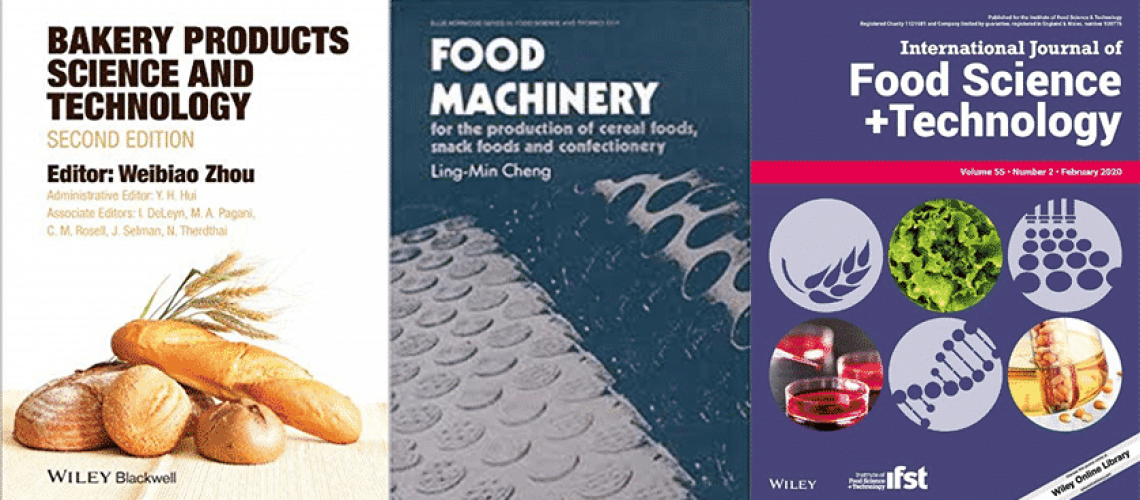This year GRDC will spend around $200m on its various programs supporting the grains industry, with $130m coming from grower levies and $70m from the federal government’s contribution. This funding bucket is topped up by the various state governments including Western Australia which added an additional $20m to partner in a range of programs including $5m/pa supporting the technical service side of grain marketing.
While farmers no doubt support the vast majority of the industry funding pool being spent on production agronomy, the reality is without a focus on grain quality and end user service all we can compete on in the market, when it comes to selling our grain, is price.
While there will always be debate about GRDC or DPIRD research priorities few growers would dispute that it was possible to remain internationally competitive if we did not continue to invest into grains research and development. The purpose of this opinion piece is not to debate the merits of the grains levy structure or where and how the funds are spent supporting farm gate production. Rather I want to focus on a part of the supply chain that most growers pay little attention to and probably know even less about. That is the food science that supports the manufacturing processes that turn grain into food.
For most of us food science generates visions of high school home economics classes taught back in an era of girls learning to bake and boys learning to make, a world we have thankfully well and truly left behind. Unlike home economics of old, today’s food sciences involves the disciplines of chemical and mechanical engineering along with bio and molecular chemistry all coming together to design food production systems to mill and bake on a commercial scale.
For those who struggle with linking food to science think of Heston Blumenthal, the British celebrity chef who focuses his cooking on what he calls the molecular of gastronomy. His scientific approach to the kitchen that links technology to food and for his efforts has earned him a global following and a gong as a fellow at the Royal Society of Chemistry.
For those not able to emulate Heston’s kitchen magic, which is all of us, we are forced to rely on commercial food production scientists and engineers to design the recipes and manufacturing processes that produce the flours, cakes, pastries and foods we consume.
As an example of the sheer size of the industry the United States has over half a million people working in this sector and in Australia over half of our universities are producing graduates which are being picked up by our own growing food manufacturing industry. As part of our grains marketing effort we need to do more to help buyers understand how best to mill and blend the grain Australian farmers grow and it’s our food scientists that can help us do this work.
As all farmers well know from the barrage of reports produced by the various economic research bodies (including AEGIC) tracking global grain markets, Australia is not just falling behind in our ability to compete we are being run down by our global competitors. Even with the best agronomy and efficiency in our supply chain we are stuck in a globalised world where former grain importers have turned the corner and have now become major competitors. With the simple recipe of land, labour, capital and enterprise the likes of historic global grain baskets like Russia, Ukraine and Argentina’s have recently regained their former reputation as major grain exporting nations.
For Australia the golden run of easy market access offered by the failure of these countries to produce surplus grain has well and truly come to an end. As our competitors have thrown off the shackles of hopeless governments and raced to capitalise on their natural advantages of deep soils, cheap labour and reliable rainfall they have returned to the export markets with huge tonnages of low cost grain.
If we are honest with ourselves, we need to acknowledge that our grain has few natural advantages aside from being close to Asian markets and being clean and safe. Outside of that it’s hard to distinguish our grain from the rest of the world’s when its sitting under a tarp or loaded onto a bulk carrier with most of it falling into the global commodity basket which competes on price and price alone. The market reality we face today is there is no easy premium, so we need to channel the skills of Heston and unpack the inner quality of what we grow for our potential buyers by offering technical food science support.
Fortunately, Western Australia has our own Heston’s working on grain within the Australian Export Grains Export Innovation Centre (AEGIC) which is a Perth based independent non for profit company established in 2012 as a partnership between DPIRD and GRDC, targeted with the goal of increasing value in the Australian grains sector. Easier said than done, but they have been working quietly away with a budget of just $10m a year and a little over 30 technical staff on a wide range of food technology projects aimed at helping millers and bakers in our markets to find new and more efficient ways of using our grains.
Projects such as reengineering production processes to allow ANW2 which is normally grown as a semi soft low protein noodle wheat to be also used in cake and biscuit making in Asian bakeries. Identifying Australian oat varieties suitable for emerging Chinese products, including oat noodles, oat rice and oat milk. Or bringing Japanese noodle specialists to Australia to taste test unreleased wheat varieties that have been bred for the Udon market. Each project is aimed at helping millers, processors and bakers tweak or blend our grain into their commercial recipes, it is applied science at its most satisfying.
Few growers really appreciate just how complex a task it is to turn grain into a food product. What is required is far more complex than scaling up the old hand grain grinder bolted to the farm kitchen bench and mixing up a dough batch in the mix master. Just understanding the chemistry of a grain of wheat and its unique ability to use gluten to expand into a doughy product is serious science.
In fact, very few of us really appreciate just how unusual and special wheat is. A grass seed that has become the world’s largest food grain that evolved into its modern form out of fourteen original species over the last 10,000 years and today exists in over 30,000 varieties. Even broken down into the six global classes of hard red winter, hard red spring, soft red winter, durum, hard white, and soft white wheat they each have vastly different qualities that millers and food processors seek for specific products that react differently to different milling processes.
In general, the hard wheat classes (spring and winter) contain higher quantities of the proteins needed to produce bread, buns, pasta, pizza crust, and other bread products. Soft wheat contains lower quantities of protein than hard wheat, and it is conducive to producing cookies, cakes, pastries, crackers, noodles, and steam breads. The complex mix of starches and proteins which make wheat unique with its gluten content is a food scientists dream, just as it can be our grain marketers’ nightmare if they cannot offer a solution to millers and bakers who have specific technical requirements. Which is exactly what AEGIC does.
In a globalised world where we are being undercut by the Black Sea, we have two options if we want to remain profitable as an industry. We can increase yields and reduce costs and/or we can service our customers and sell in a higher price bracket. To date the industry has invested heavily in the agronomy side of the equation to reduce costs and increase production but we are light on at the food science support side of the equation to help our marketing efforts overseas. AEGIC does an impressive job, just ask the Canadians who would like to copy it, but they are not alone out there offering technical support.
The real benchmark is as usual the Americans with their U.S Wheat Associates a similar organisation to AEGIC just with a vastly larger budget allowing them to have global offices in 15 countries including all of our key markets. They have been tasked with one simple goal, to develop, maintain and expand their international markets by providing technical support to their buyers, millers, bakers and food processors.
As our famers know the one thing the Americans are very good at is servicing customers with technical solutions, which is why most Australian farmers use American designed and made tractors, headers and self propelled sprayers. If we want to avoid being a price taker for our grains, we need to invest more in better understanding our markets and supporting our buyers. Both GRDC and the state government through DPIRD should be looking to double our efforts of servicing our customers and that should start with doubling the size of AEGIC.
As a major grain producing state there is no reason why we cannot build a major grain food science centre of excellence out of AEGIC here in Western Australia. If our Minister is serious about the food part of her Department of Agriculture and Food budget then at least $20m a year out of her $483m budget should be going into food science to support the likes of AEGIC and food production grant programs such as the Value Add Agribusiness Investment Fund.











